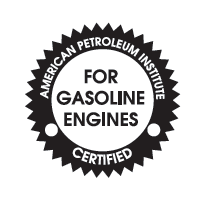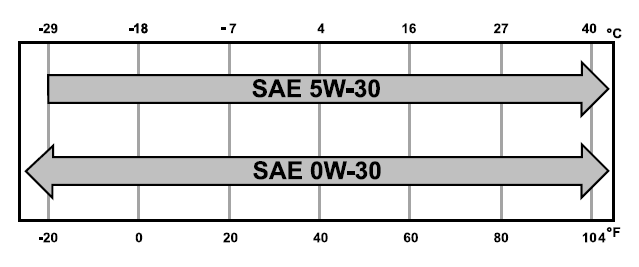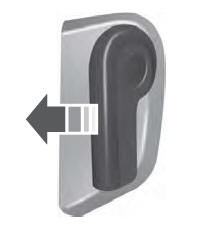Lincoln Nautilus: Capacities and Specifications / Engine Oil Capacity and Specification - 2.7L
Use oil that meets the defined specification and viscosity grade.
If you do not use oil that meets the defined specification and viscosity grade, it could result in:
- Component damage that your vehicle warranty does not cover.
- Longer engine cranking periods.
- Increased emission levels.
- Reduced vehicle performance.
- Reduced fuel economy.

An oil that displays this symbol conforms to current engine, emission system and fuel economy performance standards of ILSAC.
We recommend Motorcraft motor oil for your vehicle. If Motorcraft oil is not available, use motor oils of the recommended viscosity grade that meet API SP requirements and display the API Certification Mark for gasoline engines.
Do not use supplemental engine oil additives because they are unnecessary and could lead to engine damage that your vehicle warranty does not cover.
Capacities

Materials

Alternative Engine Oil for Extremely Cold Climates
To improve engine cold start performance, use the following engine oil in climates where the ambient temperature reaches -22.0°F (-30°C) or below.
Materials


 Engine Oil Capacity and Specification - 2.0L
Engine Oil Capacity and Specification - 2.0L
Use oil that meets the defined specification
and viscosity grade.
If you do not use oil that meets the defined
specification and viscosity grade, it could
result in:
Component damage that your vehicle
warranty does not cover...
 Cooling System Capacity and Specification - 2.0L
Cooling System Capacity and Specification - 2.0L
Use coolant that meets the defined
specification.
If you do not use coolant that meets the
defined specification, it could result in:
Component damage that your vehicle
warranty does not cover...
Other information:
Lincoln Nautilus 2018-2025 Service Manual: Roof Opening Panel Motor. Removal and Installation
Removal NOTE: Removal steps in this procedure may contain installation details. Place the roof opening panel glass in the fully CLOSE position. Place the roof opening panel shield to the fully OPEN position...
Lincoln Nautilus 2018-2025 Owners Manual: General Maintenance Information
Why Maintain Your Vehicle? Carefully following the maintenance schedule helps protect against major repair expenses resulting from neglect or inadequate maintenance and may help to increase the value of your vehicle when you sell or trade it. Keep all receipts for completed maintenance with your vehicle...
Categories
- Manuals Home
- 1st Generation Nautilus Owners Manual
- 1st Generation Nautilus Service Manual
- Normal Scheduled Maintenance
- Opening the Liftgate
- Auto-Start-Stop
- New on site
- Most important about car
Opening and Closing the Hood
Opening the Hood

